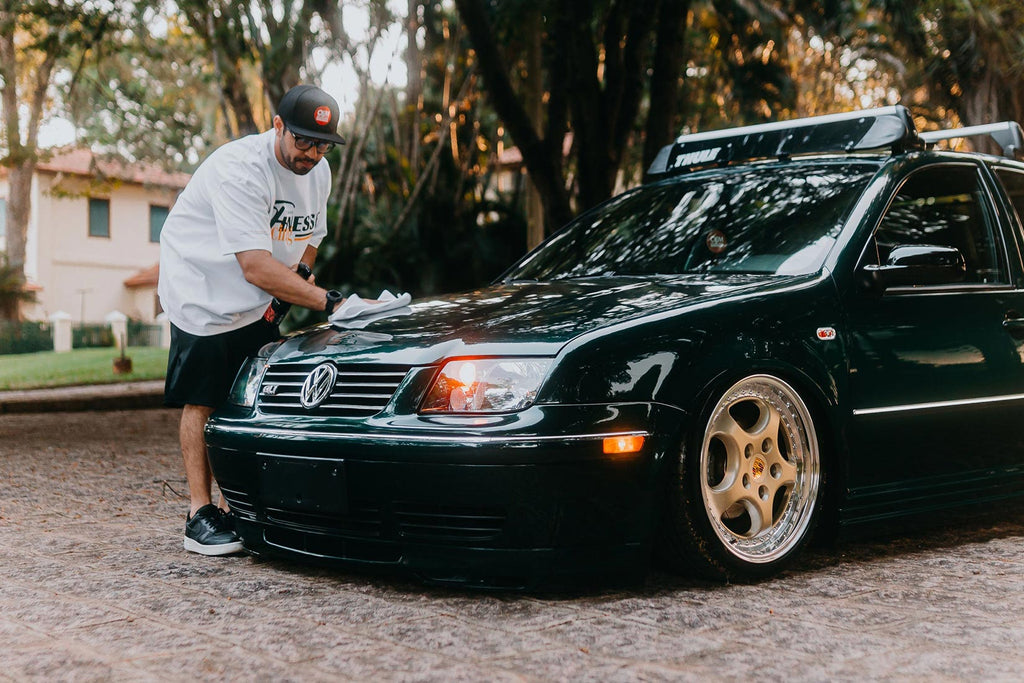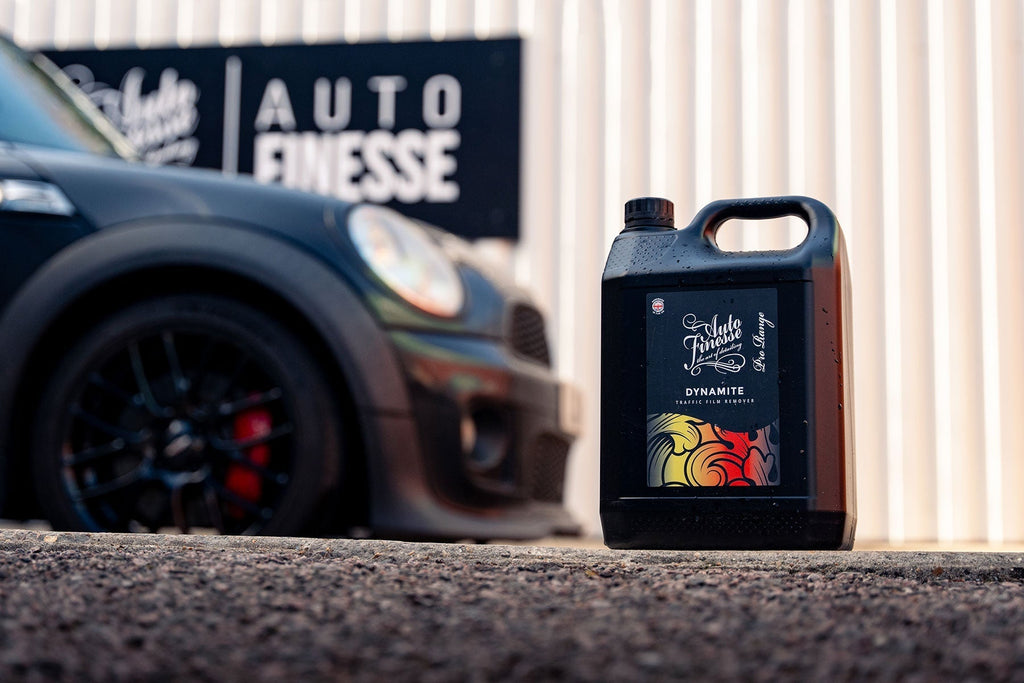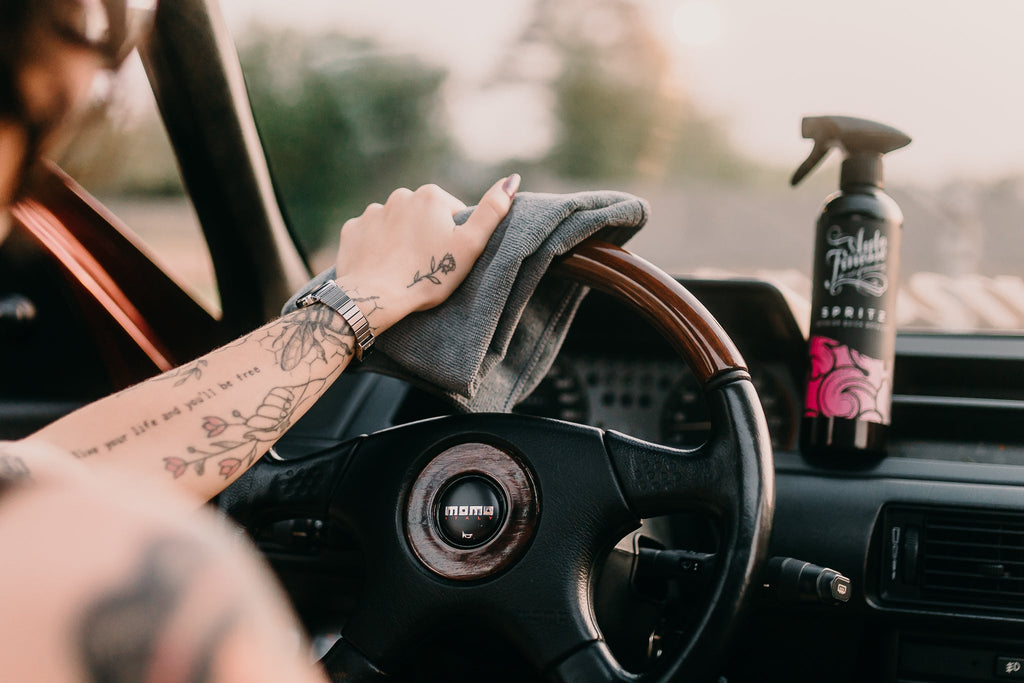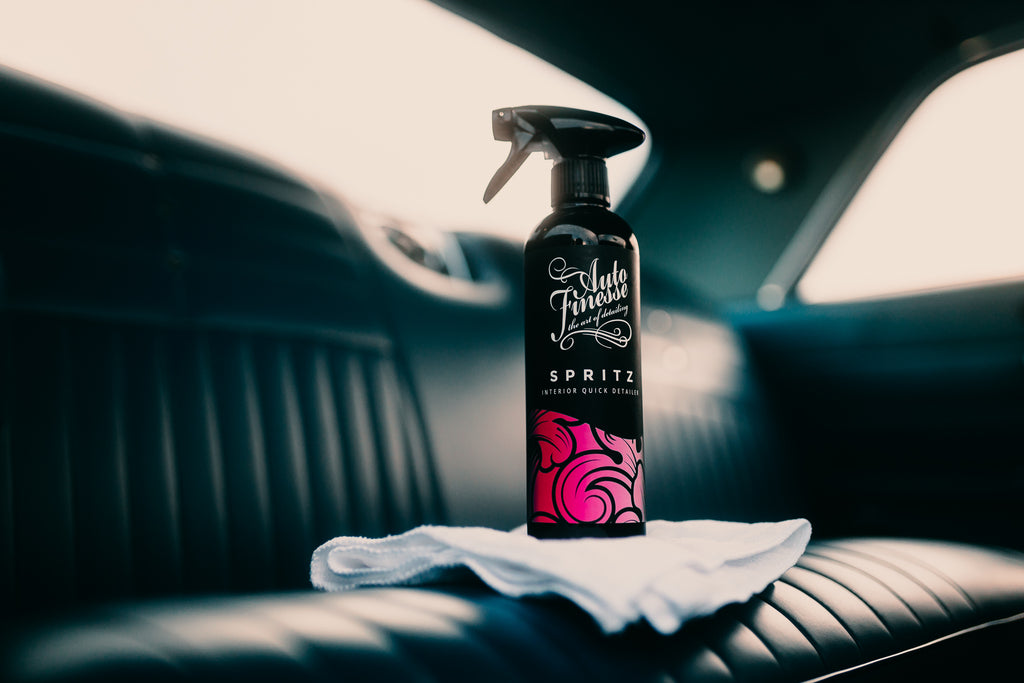How to Remove Stubborn Road Contaminants Safely

Read this guide to learn:
- Most common road contaminants
- Why are they a problem?
- Steps to remove them
- How to prevent the risk
- Common mistakes
Your gleaming new or well-maintained ride is often subjected to stubborn road contaminants—the most common being asphalt residue and road tar. Characterised by sticky, black deposits, they damage car paintwork when left untreated. Only the right techniques can remove them and ensure an unharmed finish. Fortunately, you have the finest car detailing products from Auto Finesse to assist you with a step-by-step removal! Let’s take you through the finest ones.
Alternatively recognised as bitumen, road tar is the sticky, black, viscous liquid that is often used for road construction and even during maintenance. When bound together with sand and gravel, it converts to asphalt. This substance is more likely to splash onto passing vehicles when driven on freshly paved or recently repaired roads. It’s more prevalent when the weather is warm and the material is more pliable.
Wondering why road tar and asphalt are not just eyesores but detrimental to your car? They are responsible for causing the following issues:
- Damage to paintwork: When tar bonds with your vehicle’s paintwork, removal becomes challenging. A forceful attempt can damage the finish.
- Corrosion and rust: Tar on vehicles traps moisture and road contaminants, resulting in the formation of rust and ultimately, corrosion.
- Threat to your car aesthetics: Black and sticky residues are more prominent on light-hued vehicles than on deep-coloured ones, thereby ruining vehicle appearance.
Tackling road contaminants is effortless as long as you are aware of the right method and equipped with the correct car cleaning accessories. Enclosed are the steps to address asphalt and tar:
Step 1: Detail Your Car Under a Shade
Tar removal is more effective when a car is detailed in a cool area. Under direct sunlight, it can heat the tar and make removal challenging. Cleaning a vehicle under unfavourable conditions can also cause car detailing products to vaporise quickly and deliver unsatisfactory results.
Step 2: Spend Time on Pre-Washing Your Car
Now, gather a few items, such as car wash soap and a microfibre mitt, to wash the affected spot on your vehicle. This step causes loose dirt and debris to come off. Mind not to scrub hard, as it might cause the tar to spread and the paint to develop scratches. Shop pre-wash car detailing products from Auto Finesse today!
Step 3: Apply Tar Remover
Get a tar remover and dissolve the stubborn and sticky residues on your car. Auto Finesse brings you Oblitarate, a powerful solvent-based formula for paintwork decontamination. It’s safe on all surfaces, including bare metals, modern paints and powder-coated ones. Watch how it works in this YouTube video!
Step 4: Treat Your Car to a Clay Bar
Some traces of tar can remain, and this is where a clay bar proves practical. Here’s how you must proceed during a clay bar treatment:
Apply Glide, a clay bar lubricant, to lower the friction when washing your car Let the clay bar glide down the affected region of your car by following a straight path Fold the clay bar as you use it to clean the surface Now, clean up the mess with a microfibre cloth
At Auto Finesse, we feature only natural kaolin clay to target bonded road contaminants—both organic and inorganic. One of the best features of it is that the 200 gms of ultra-fine clay we feature within our collection is less abrasive on sensitive paintwork. Whenever you shop, steer clear of polymer clays and spend on natural kaolin ones. The Glide that complements it not only lowers friction but also helps encapsulate debris without damaging the surfaces or leaving scratches behind.
Step 5: Wash and Dry Your Car Thoroughly
Once you remove the tar, try to wash the car thoroughly to address lingering residues. Finally, use a clean microfibre towel to dry the vehicle surface and prevent water spots from forming on it.
Step 6: Restore Car Protection
Clingy tar requires a lot of effort to remove. Thanks to Auto Finesse’s car detailing products and microfibre towels, it’s a lot easier to achieve! However, tar removal strips off waxes and sealants. If you follow an expert recommendation, apply it freshly to your ride and restore protection once again. Grab Glisten online for up to 4 weeks of protection. You may also purchase Ceramic spray wax for extended protection of up to 3 months.
More Car Detailing Products to Clean Your Car of Road Tar and Contaminants
At Auto Finesse, we showcase plenty of other detailing products to address road tar and impurities. You may shop from our range today and collect the following:
- Iron Out: It’s an iron fallout remover that eliminates sharp metal shrapnel and addresses brake dust contamination on cars. It works to dissolve the metal particles into a solution, ready to be rinsed away.
- Citrus Power: It’s a pH-neutral car pre-wash, ready to be used for contactless application. When removing road tar and contaminants, you can take advantage of its powerful formula that contains cleaning agents and degreasers. Here’s what T Fröhlich, a valued client, has expressed in appreciation of Citrus Power:
Citrus power is the best cleaner and insekt remover I've ever tried. Perfect cleaning. Best regards from Saxony/Germany
- Decontamination Kit: This paint-safe formula is responsible for complete contaminant removal, specifically the embedded impurities. If you wish to access Iron Out, Oblitarate, clay bar, Glide and microfibre work cloth all at once, it’s a great option.
- Reactive: Quick and easy to use, Reactive deep cleans and decontaminates ferrous particles and brake dust into a rinsable solution. As an alloy wheel cleaner, it proves safe on lacquered and powder-coated finishes.
- Dynamite: This traffic film remover requires dilution to break down road grime from all exterior surfaces. Gentle on protection layers, it’s a top-flight pre-wash detailing product, perfect for heavy degreasing.
- Imperial: Since wheels are exposed to the most to traffic film and road contaminants, they demand acid-free, powerful cleaners. Imperial is exactly so. The pH-balanced formulation supports intense chemical cleaning without damaging the surfaces.
What Are The Preventive Measures to Minimise the Risk of Road Tar?
While Auto Finesse has you covered with an entire range of car detailing products, including the popular traffic film remover, you must still take preventive measures to prevent road tar from making its mark on your ride. Peruse the top tips to lower the risk of splatter:
- Wash your car regularly
Committing to a routine wash prevents tar from bonding with the car paintwork, especially on the bottom parts—wheels and lower panels.
- Avoid driving on freshly paved roads
It’s best to steer clear of recently repaired and paved roads to avoid tar splatter.
- Always apply a protective coating
Invest in a car ceramic coating to not only make cleaning effortless but also serve as a protective barrier between your ride’s paint and tar.
- Ensure a safe distance
Stay away from construction fleets and other cars when driving on freshly paved roads to lower the risks of tar splatter.
What Mistakes to Avoid?
When cleaning your car of tar and stubborn road contaminants, these mistakes can prove detrimental to your ride:
- Tar spot avoidance: Tar, as all recognise, turns harder when left untreated. Over time, it hardens and is difficult to remove, thereby damaging paintwork.
- Post-cleaning wax skipped: As discussed earlier, it’s best to reapply wax or sealant to cars after tar removal. Otherwise, you risk its vulnerability to environmental contaminants.
- Use of abrasive tools: Car paintworks are more prone to scratches when DIY detailers use rough brushes, harsh scrubbers and steel wool. Change your practice to incorporate specialised detailing products
Maintain a Tar-Free Car with Auto Finesse!
Some things are unavoidable in life. Road tar and asphalt are two of them. The challenge they bring to drivers is not just limited to aesthetics, but also to paint damage later on. Shop pre-wash products, waxes and more from Auto Finesse today! Find a local stockist nearby to source traffic film remover and more. Let’s help you navigate the tar removal process and save money on professional assistance.































